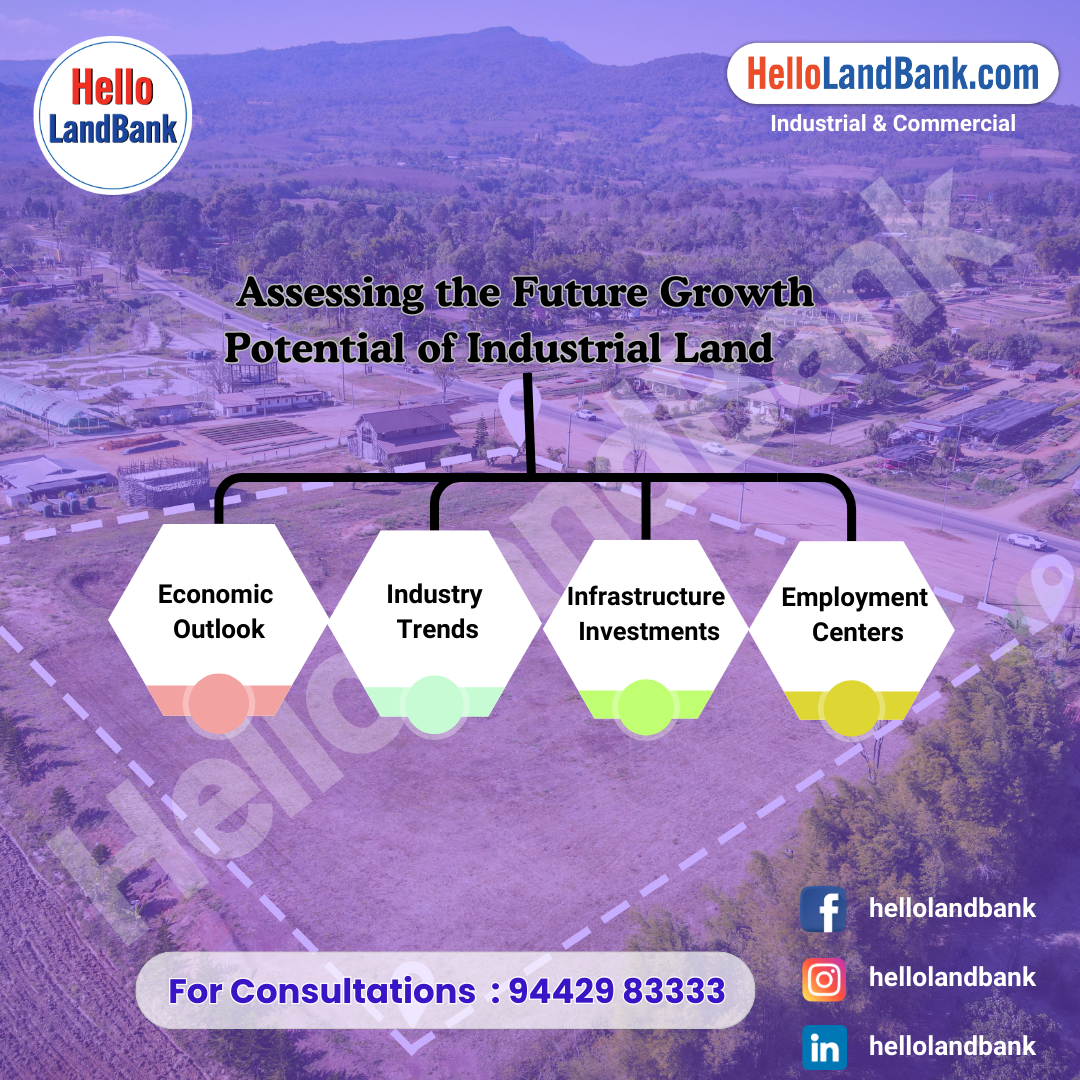Assessing the future growth potential of industrial land involves analyzing various factors that influence market dynamics, economic trends, and demand drivers. Here’s how you can assess the future growth potential of industrial land:
1. Economic Outlook:
- Evaluate the economic outlook for the local market area and broader region, considering factors such as GDP growth projections, employment trends, population growth, and business sentiment. Positive economic indicators suggest growth opportunities for industrial real estate.
2. Industry Trends:
- Identify industry sectors driving demand for industrial space, such as e-commerce, logistics, manufacturing, and distribution. Research industry growth projections, supply chain trends, and technological advancements influencing future demand for industrial properties.
3. Infrastructure Investments:
- Consider infrastructure investments, transportation networks, and logistics infrastructure enhancements planned or underway in the market area. Investments in transportation hubs, ports, airports, and railroads can stimulate industrial development and support future growth.
4. Population Growth:
- Analyze population growth trends and demographic shifts in the local market area to anticipate changes in consumer demand, retail distribution patterns, and industrial space requirements. Population growth drives demand for goods and services, impacting industrial real estate demand.
5. Employment Centers:
- Identify emerging employment centers, business clusters, and innovation hubs attracting job growth and corporate expansions. Proximity to major employment centers and labor markets enhances demand for industrial space and supports future growth potential.
6. Technology and Innovation:
- Monitor technological advancements, automation trends, and innovation clusters that may influence industrial real estate demand. Technological innovations such as e-commerce, robotics, and 3PL logistics drive changes in industrial space requirements and facility design.
7. Supply-Demand Dynamics:
- Assess supply-demand dynamics in the industrial real estate market, including vacancy rates, absorption rates, and development pipeline. Positive absorption, declining vacancy rates, and limited supply indicate strong demand and growth potential for industrial properties.
8. Regulatory Environment:
- Consider regulatory factors, zoning regulations, land use policies, and development incentives that may impact industrial land development and investment opportunities. Favorable regulatory frameworks and government incentives can stimulate industrial growth and investment activity.
9. Market Competitiveness:
- Evaluate market competitiveness, market positioning, and competitive advantages of industrial land properties relative to other markets and submarkets. Factors such as location, infrastructure, labor availability, and business climate influence market competitiveness and growth potential.
10. Investor Sentiment:
- Monitor investor sentiment, capital market conditions, and investment trends in the industrial real estate sector. Positive investor sentiment, favorable financing terms, and strong capital inflows indicate confidence in future growth prospects and investment opportunities.
By conducting comprehensive market analysis and considering these key factors, investors can gain insights into the future growth potential of industrial land and make informed investment decisions aligned with market dynamics and opportunities. Thorough due diligence and ongoing monitoring of market trends are essential for assessing and capitalizing on growth opportunities in the industrial real estate market.




